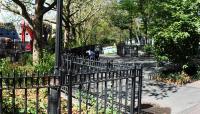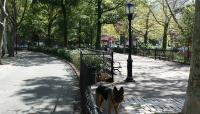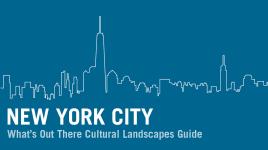Landscape Information
Located in the Hell's Kitchen neighborhood, the park opened in 1905, one of several parks intended to provide recreation and open space in dense, urban neighborhoods. It was designed by Samuel Parsons, Jr. on a rectangular 7.4-acre site with edges that sloped up on three sides and views to the Hudson River. Four corners entrances led to a Neoclassical style pavilion and pergola designed by Barney & Chapman Architects that housed shower baths, schoolrooms, recreation place for toddlers and an indoor gymnasium. The park also included open lawn, an arbor, and a music venue, none of which remain today. The east side of the park was devoted to children's activities while the west side was designed with a sloped bank to enhance views of the Hudson River. The entire park was enclosed in a six-foot iron fence. The park was the first to open a "Children's Farm Garden", pioneered by Frances Griscom Parsons, where local children could learn about planting, nutrition and conservation. The garden closed in 1932.
In 1930 a memorial was dedicated to honor the neighborhood young men who died in World War I, designed by sculptor Burt W. Johnson and architect Harvey Wiley Corbett. In 1931 the construction of the West Side Elevated Highway and New York Passenger Terminal reduced the park to 5.8 acres subsequently blocked views to the river. Today the park includes sycamores planted along a curved path on the west side, a rose garden, a dog park and synthetic turf soccer and baseball fields.














